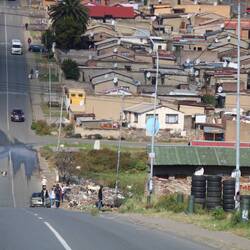Hector Pieterson Museum
 May 9, 2023 in South Africa ⋅ ☀️ 16 °C
May 9, 2023 in South Africa ⋅ ☀️ 16 °C
Our next stop was at the Hector Pieterson Museum and Memorial. We had an expert guide who told us the familiar story of how Hector, aged 12, was shot and killed at the age of twelve during the SowetoRead more





















































































































